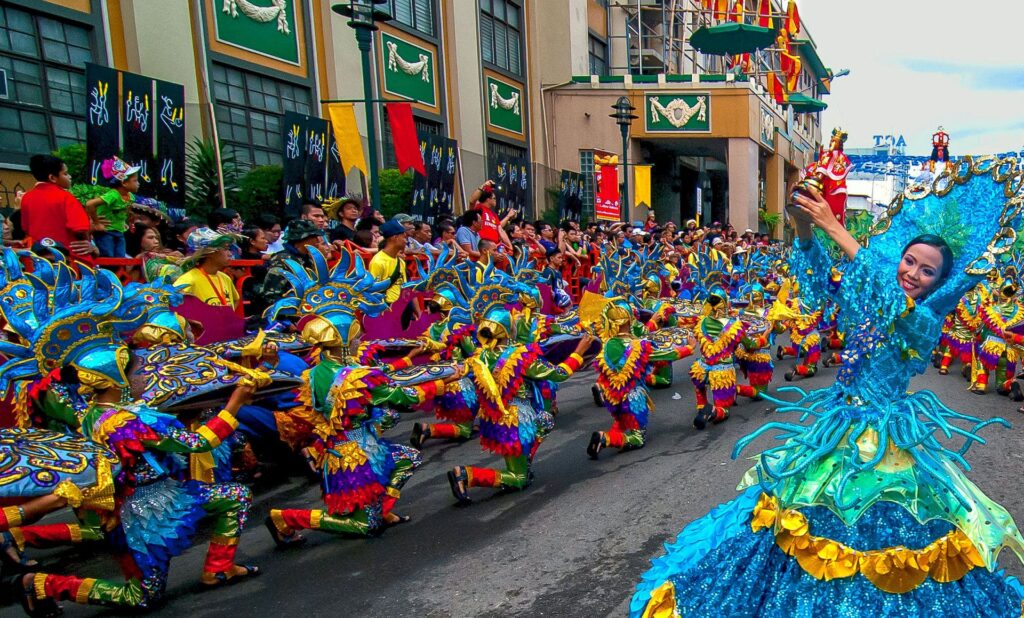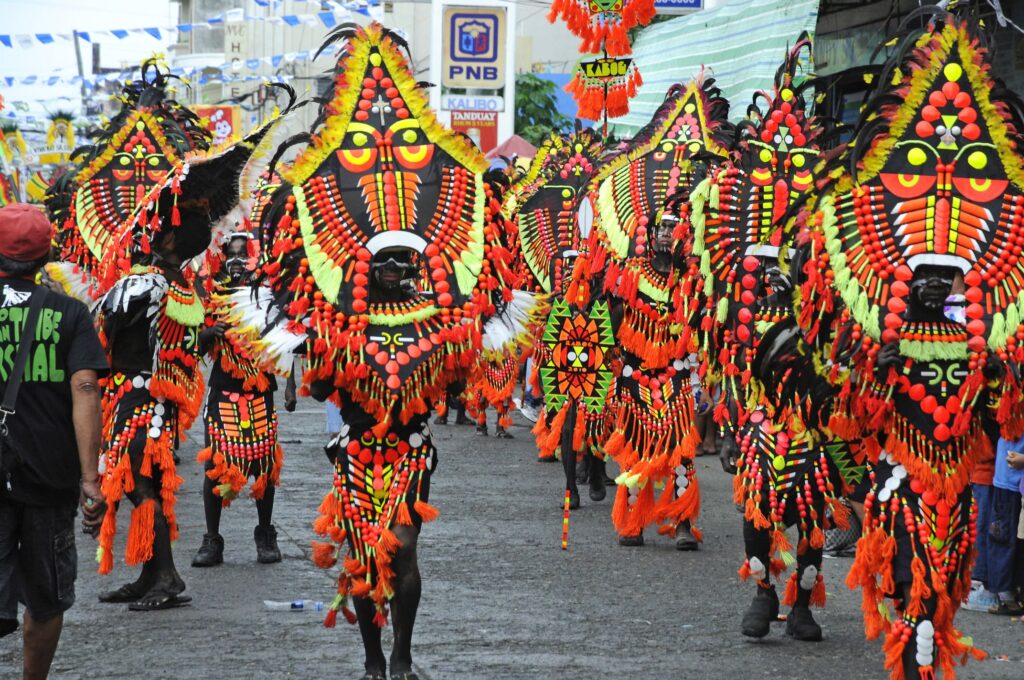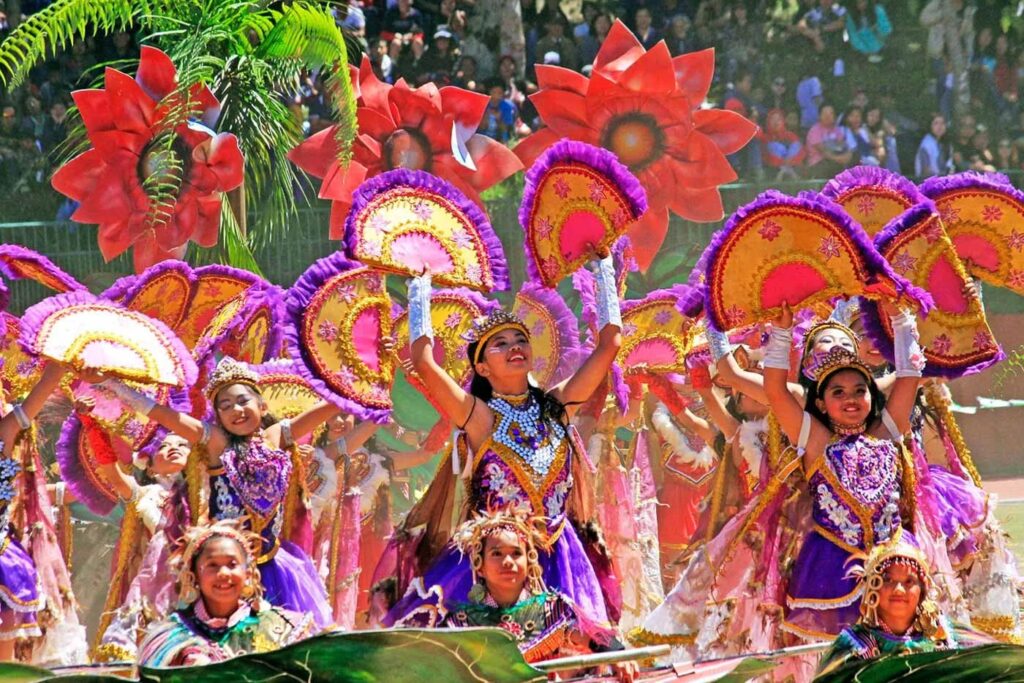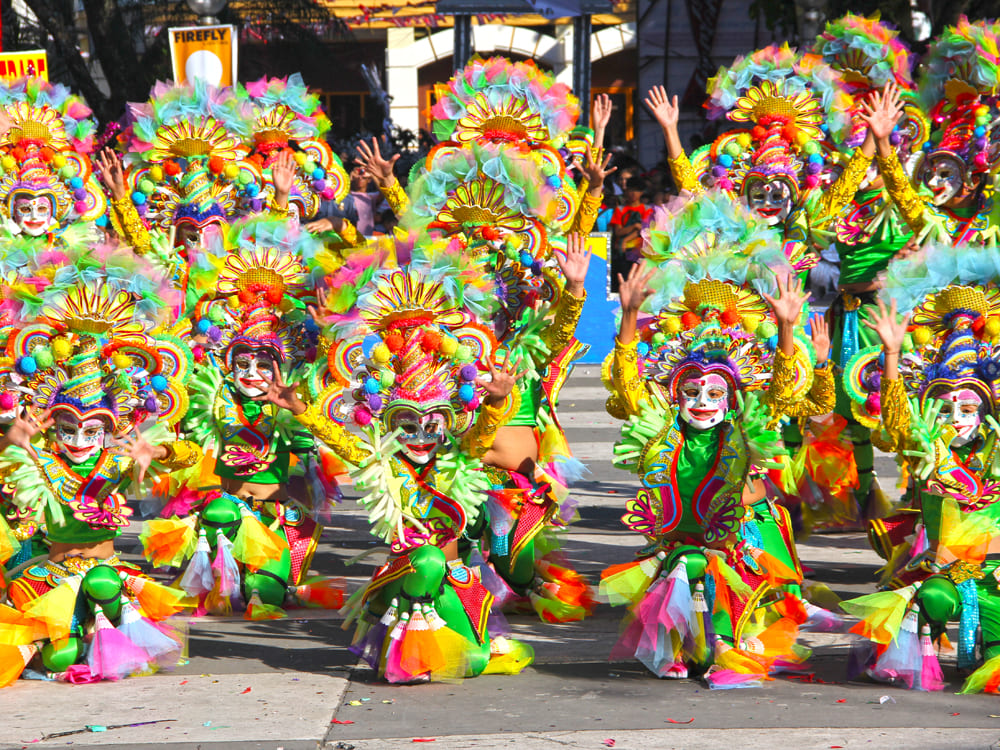Did you know that there are over 42,000 festivals in the Philippines each year? These colorful celebrations are much more than just parties—they bring in tourists, help local businesses, and keep Filipino culture alive. Each festival has its own special story, mixing history, faith, and amazing art that attracts millions of visitors from around the world.
From the exciting drumbeats of Sinulog to the beautiful flower displays of Panagbenga, these festivals show what makes Filipinos special: strong, happy, and proud of their heritage. Here are the must-see festivals that make the Philippines the ultimate festival destination for 2025.
Top Festivals in the Philippines:
- Sinulog Festival
- Ati-Atihan Festival
- Panagbenga Festival
- Pahiyas Festival
Sinulog Festival, Cebu City

Every third Sunday of January, Cebu City becomes the center of the Philippines’ biggest religious festival. Sinulog honors the Santo Niño (Holy Child) with massive street parades, amazing dance performances, and beautiful water processions. Dancers wear colorful costumes and move to a special rhythm—two steps forward, one step back—just like the flow of Cebu’s river. You’ll see vibrant street parades, synchronized dancing, religious processions, and boat parades that will take your breath away.
This festival started way back in 1521 when Ferdinand Magellan gave the Santo Niño statue to a local queen. What began as a small religious gathering is now a week-long celebration that brings over 3 million visitors every year. Today’s Sinulog includes fireworks, street parties, and even live streams so people worldwide can join in. The numbers are incredible—the festival brings in over ₱30 billion to the local economy, and hotels in Cebu are 98% full during festival time.
Ati-Atihan Festival, Aklan

Picture this: a festival where everyone joins in the fun, not just watches from the sidelines. That’s Ati-Atihan in Kalibo, Aklan, happening during the third week of January. People paint their faces black, wear amazing tribal costumes, and dance to non-stop drumming. Everyone can join the street dancing—there’s no need to be a professional performer. The festival celebrates the Ati people, who were the original settlers of the island.
Ati-Atihan started as a harvest celebration before becoming a religious festival honoring the Santo Niño. Unlike other festivals with planned performances, this one is all about being spontaneous—anyone can dance, sing, and celebrate however they want. Over 500,000 people visit every year, making it a huge boost for tourism in Western Visayas. Local businesses, especially those selling traditional Aklanon woven textiles and crafts, see their sales go through the roof during festival time.
Panagbenga Festival, Baguio City

Every February, Baguio City turns into a flower paradise during the Panagbenga Festival. The name means “season of blooming” in the local language, and that’s exactly what you’ll see—huge floats covered in fresh flowers, street dancers dressed like blooming flowers, and amazing garden displays. Think of it as the Philippines’ version of the famous Rose Parade, but with a unique Filipino twist and mountain city charm.
Panagbenga started in 1995 to help Baguio bounce back after a terrible earthquake in 1990. The festival celebrates the local Cordilleran culture with traditional performances and exhibits that showcase indigenous heritage. It’s been a huge success—over 1.5 million tourists visit every year, bringing in about ₱1.2 billion to the local economy. Plus, everyone wants to buy Baguio’s famous strawberries and beautiful handwoven textiles during their visit.
Pahiyas Festival, Lucban Quezon

Every May, the small town of Lucban in Quezon transforms into an artist’s dream. Pahiyas is the ultimate thanksgiving festival where every house becomes a work of art. Families compete to create the most beautiful decorations using kiping—colorful rice wafers shaped like leaves. Add in amazing feasts and lively parades, and you’ve got a festival that celebrates both creativity and gratitude for a good harvest.
This tradition goes way back to when farmers would offer their crops to San Isidro Labrador, the patron saint of farmers. Over time, these simple offerings became the incredible house decorations that make Pahiyas famous across the Philippines. The festival brings in about ₱500 million to Lucban’s economy and boosts sales of local favorites like longganisang Lucban (special sausage) and pancit habhab (a local noodle dish you eat without utensils!).
FAQs: Philippine Festivals
When is the best time to visit the Philippines for festivals?
The peak festival season runs from January to May, with Sinulog and Ati-Atihan kicking off the year in January, followed by Panagbenga in February and Pahiyas in May.
How many festivals does the Philippines celebrate annually?
The Philippines hosts over 42,000 festivals each year, making it one of the most festival-rich countries in the world.
What should I expect in terms of accommodation during festival seasons?
Book early! During major festivals like Sinulog, hotels report up to 98% occupancy rates. Prices also tend to increase during peak festival periods.
Are these festivals religious or cultural celebrations?
Most Philippine festivals blend both religious and cultural elements. For example, Sinulog and Ati-Atihan honor the Santo Niño while incorporating indigenous traditions and modern entertainment.
Can tourists participate in the festivals or just watch?
It depends on the festival! Ati-Atihan is famous for encouraging everyone to participate—anyone can dance, chant, and celebrate. Other festivals like Sinulog feature more organized parades where participation may be limited to registered performers.
From the spiritual grandeur of Sinulog to the floral elegance of Panagbenga, Philippine festivals offer something for everyone. These celebrations preserve heritage, fuel economies, and unite communities in joy.
Which of these festivals do you dream of experiencing? Have you been to any of them? Share your stories in the comments below!
M2.0 Communications is a Public Relations Firm that specializes in business, technology, and lifestyle communication. We offer a range of PR services including crisis communications, media relations, stakeholder management, influencer marketing, and video production. Learn more about our work on our case studies page.



